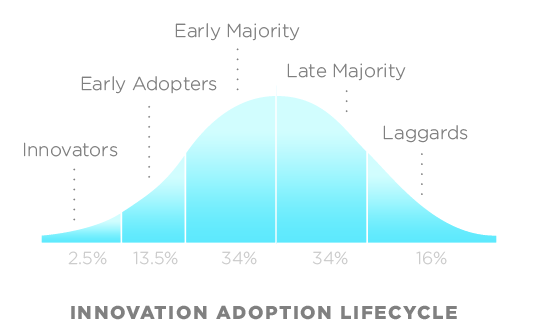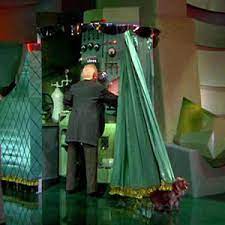Oct30 2023
How to quickly test your business idea without spending a fortune
It's an exciting time when you identify an opportunity for a new business or technical innovation. However, there is a big difference between a good idea and a great idea! A great (scalable) idea will be one that can gain traction quickly to take significant market share.
In this article, we look at how to test your idea before you go ahead to deploy significant resources, raise capital or share equity.
Most modern disruptive businesses apply new technology, either in the product itself, or in the business model. This means that significant technical capability is required. This requirement leads to the distinction between a technical and non-technical founder, in that a technical founder has the ability to implement the first product prototype.
For non-technical founders, all paths forward tend to require funding, either personal or external. If you are not able to build a prototype yourself, there is a need to either:
- partner with a technical co-founder.
- employ technical employees.
- engage a product or software development firm.
These are not usually good options before you have discovered if there will be significant demand for your new product or service.
But we can run a survey!

Surveys of potential customers might be easy to setup, but they are notoriously unreliable in predicting future demand of a new product or service. There is often little relationship between what people say they will buy, and what they actually do buy.
Surveys are only typically useful when you already have a product to show, or when you are asking consumers about incremental improvements to an existing product, that they can easily conceptualise.
There are many other methods that can be used to gauge product interest, such as user-testing, user-observations, application of design thinking, user-interviews and product mockups. But in the end, these are simply a prediction about future demand for your product, and may not necessarily reflect the reality of the market.
What this means is that you need to get into the market as soon as possible to start capturing real customer feedback (e.g., by recruiting users or making sales).
Do you have a thirsty crowd?

When meeting with founders, I often ask the question, do you have a thirsty crowd? Do you have potential customers that are demanding your product, ready to knock down your door to get it? If you intend to scale your business at a fast rate, this type of demand is a given.
Your idea might be novel, it might be valuable, but is there a willing group of paying customers? Or are you going to spend all your time trying to educate the market?
Of course, some products will take time to catch-on, but in almost all cases with a technology startup, this doesn’t end up actually happening. This is clear from the 95% to 98% failure rate of new technology startup businesses over the first 5 years.
Your product may have some demand or steady growth. But is it hockey-stick growth? This business might be better suited as small business or consultancy. Raising venture capital or angel funding for such a business is likely to be a financial disaster for all involved, destroying what could have been a significant income stream for you personally, if you had correctly sized the market demand.
If you don’t yet have a thirsty crowd, but are dedicated to building a high growth startup, it’s imperative you start looking for your crowd. Or pivoting your idea to where the thirty crowd is.
Audience Sequencing
Enter the concept of audience sequencing. The idea here is to actively search for your first group of customers (the innovators in the diagram below), that really, really care about what you are offering, and will put up with a low-quality initial product. These first customers will enable you to test and improve your product, ideally funding ongoing development through sales.
It is likely that this valuable first set of customers will be limited in size. When this customer base becomes saturated, the business needs to begin servicing the next segment of customers (the early adopters).
What appeals to the second segment of customers will very likely vary from the first segment. This second segment is going to have greater and new expectations for your product.
This process will continue, with a need for you to continually meet the varying and expanding needs of new customers segments.

Minimum Viable Product (MVP)
Now an overused term, the MVP does have some utility. The idea being to find the fastest path to market, to quickly test your idea.
However, the MVP must be sufficient to meet the essential needs of the customer, but not potentially damage your fledging business with a sub-optimal product.
MVPs clearly don’t work if you are developing a product that has an inherently long R&D process, or large infrastructure costs. Extreme examples here would be developing a fusion reactor, or a new vaccine. But most new businesses don’t require this type of investment.
So what is the minimum viable version of your product?
What features can you leave to add later?
What do you absolutely need to provide in order to secure customers (or secure free user sign-ups)?
Avoid Automation

Almost always, automation is expensive and takes considerable time to implement. It is also will require advanced technical skills in software and product development. At this stage of the process, you also are unlikely to be clear on what your product specifications are.
If you are building an Internet connected product or business model, one approach is to initially avoid any form of automation, and complete the steps needed behind the scenes manually. In this way, you can give the impression of a working product, with all the work handled manually behind the scenes. This approach is known as a Wizard of Oz MVP – i.e., a old man behind the curtain pulling the strings.
From the outside, this MVP looks like a fully operational system, but with all tasks completed by a human.
This approach is not scalable over the long-term, but it will enable you to launch very quickly.
Don’t build a product - The Concierge MVP

The concierge MVP is similar to the Wizard of Oz MVP, however the manual approach is all out in the open. You personally help your customers to achieve their goal, without even building a product. Such an approach might be characterised as a consultancy or service provider business.
Regardless of what you call your MVP, it is worth considering what you could do manually in order to quickly test you’re your idea. It’s ok if this approach won’t scale, automation can come later. What is crucial is to validate your idea quickly and inexpensively.
At this early stage, it is vital to get in direct contact with customers, so you can experience their needs and difficulties. This will place you in the best position to discover the specifications for your product prototype.
The no-code startup
So once you have a handle on what your product specifications are, and have completed your first conceirge or wizard-of-Oz MVP, you can start to look at development and automation of your business model or software product.
At this point, you could get a developer involved, or you might want to look at building a no-code startup.

No-code or Low-code is a software development approach that requires limited programming skills in order to quickly build a software product, website or MVP. It's often suitable for a first product prototype.
There is now a plethora of tools available for creating online assets, such as websites, app builders, spreadsheet automation tools, marketing / email marketing tools, customer relationship management tools, learning management systems, SaaS platforms for memberships, robotic process automation (RPA).
Examples of such tools might include shopify, squarespace, wix, airtable and zapier. As well as SaaS tools like mailchimp, campaign monitor, typeform and other form builders.
Combined with help from freelancers, using platforms like fiverr, upwork and freelancer, it’s incredible what can be achieved on a small budget and with limited programming skills.
Time to get the help of a developer
The no-code startup is not a replacement for a more technical and customised solution. As your business scales, the need for customisation and specific automation will grow.
So once you have proven your MVP, it is now the right time to get professional help, either in the form of technical employees or engaging with an agency.
With your MVP, you are in a far better position to negotiate terms, as well as more precisely define the specifications given to any developer.
Engaging a developer or employing technical staff has now become a targeted investment with clear goals, rather than an open-ended experiment. Remember that hazy specifications have the potential to 10X or more your costs and development time.
The importance of the business mission

So you have the first sales of your MVP. Congratulations!!
Looks like this is going to work! That means it's time to get strategic and create your long-term business mission.
In order to recruit the best talent to your startup, be it a technical co-founder or a leadership team, your business mission needs to be highly compelling. It is also very important to inspire potential investors.
So put on your visionary founder hat (and cape), and paint the grand vision of what your business can do over the next ten years.
A clear business mission is a vital tool in recruitment. Technical staff are likely to have many employment options, and you may be competing against well known businesses that provide high salaries and a large range of benefits. So how can you recruit A-players to join your team? Provide them with a dynamic mission that enables them to make a difference in the world, combined with a decent salary and equity options.
This also means that means you need to consider personally, if can you work in this business for the next five to ten years. Is what you are doing meaningful enough to you? Do you care enough to take this long journey? Recruiting yourself will be the most important hire you make!
Best of success in your startup journey!


